-
 Bitcoin
Bitcoin $106,754.6083
1.33% -
 Ethereum
Ethereum $2,625.8249
3.80% -
 Tether USDt
Tether USDt $1.0001
-0.03% -
 XRP
XRP $2.1891
1.67% -
 BNB
BNB $654.5220
0.66% -
 Solana
Solana $156.9428
7.28% -
 USDC
USDC $0.9998
0.00% -
 Dogecoin
Dogecoin $0.1780
1.14% -
 TRON
TRON $0.2706
-0.16% -
 Cardano
Cardano $0.6470
2.77% -
 Hyperliquid
Hyperliquid $44.6467
10.24% -
 Sui
Sui $3.1128
3.86% -
 Bitcoin Cash
Bitcoin Cash $455.7646
3.00% -
 Chainlink
Chainlink $13.6858
4.08% -
 UNUS SED LEO
UNUS SED LEO $9.2682
0.21% -
 Avalanche
Avalanche $19.7433
3.79% -
 Stellar
Stellar $0.2616
1.64% -
 Toncoin
Toncoin $3.0222
2.19% -
 Shiba Inu
Shiba Inu $0.0...01220
1.49% -
 Hedera
Hedera $0.1580
2.75% -
 Litecoin
Litecoin $87.4964
2.29% -
 Polkadot
Polkadot $3.8958
3.05% -
 Ethena USDe
Ethena USDe $1.0000
-0.04% -
 Monero
Monero $317.2263
0.26% -
 Bitget Token
Bitget Token $4.5985
1.68% -
 Dai
Dai $0.9999
0.00% -
 Pepe
Pepe $0.0...01140
2.44% -
 Uniswap
Uniswap $7.6065
5.29% -
 Pi
Pi $0.6042
-2.00% -
 Aave
Aave $289.6343
6.02%
How long can the RSI rise if it is overbought? This technique determines the top!
RSI overbought conditions in crypto don't guarantee price drops, but combining RSI divergence, candlestick patterns, and volume analysis improves reversal predictions.
Jun 14, 2025 at 06:07 pm

Understanding RSI and Overbought Conditions
The Relative Strength Index (RSI) is a momentum oscillator widely used in technical analysis within the cryptocurrency market. It measures the speed and change of price movements on a scale from 0 to 100. When the RSI crosses above 70, it is generally considered overbought, suggesting that the asset may be overvalued or due for a correction. However, this doesn't always mean an immediate reversal will occur.
In crypto trading, especially with volatile assets like Bitcoin or Ethereum, the RSI can remain in overbought territory for extended periods during strong uptrends. Traders must understand that an overbought RSI does not guarantee a price drop; rather, it signals caution and the need for further confirmation before making bearish decisions.
Why RSI Can Stay Overbought in Crypto Markets
Cryptocurrency markets are known for their high volatility and rapid price swings. Unlike traditional financial markets, digital assets often experience parabolic moves, where prices surge quickly and sustainably. During such rallies, the RSI can stay above 70 for days without dipping below. This phenomenon occurs because:
- Strong buying pressure continues to dominate the market.
- Institutional inflows or whale activities drive persistent demand.
- Positive news cycles fuel FOMO (fear of missing out), sustaining momentum.
It's crucial to note that while the RSI remains overbought, traders should look for divergences or trendline breaks as potential signs of exhaustion. Simply relying on RSI crossing 70 isn't enough to predict a top accurately.
Using RSI Divergence to Spot Market Tops
One of the most effective ways to determine if an overbought RSI is signaling a real top is by analyzing RSI divergence. This occurs when the price makes a new high, but the RSI fails to confirm with a corresponding high. There are two main types of divergences:
- Regular Bearish Divergence: Price forms higher highs, but RSI forms lower highs.
- Hidden Bearish Divergence: Price forms lower highs, but RSI forms higher highs.
To apply this technique effectively:
- Plot the RSI indicator on your chart using a 14-period setting.
- Identify recent swing highs in both price and RSI.
- Draw trendlines connecting these highs.
- If the RSI high is lower than the previous one while the price is higher, a bearish divergence is confirmed.
This method helps filter out false signals and provides a more reliable indication of potential reversals.
Incorporating Candlestick Patterns with RSI
Combining candlestick patterns with RSI readings significantly improves the accuracy of identifying market tops. When the RSI is overbought, certain candlestick formations can serve as early warning signs of a reversal. These include:
- Shooting Star: A bearish reversal pattern that appears after an uptrend.
- Bearish Engulfing: A large red candle completely engulfing the previous green candle.
- Evening Star: A three-candle pattern indicating a shift from bullish to bearish sentiment.
When these patterns form at key resistance levels or Fibonacci extension zones while RSI is overbought, they act as confirmation signals for a potential top. Traders should wait for the candlestick pattern to close before taking any action to avoid premature entries.
Volume Analysis: Confirming RSI Signals
Volume plays a critical role in validating RSI-based signals. An overbought RSI accompanied by declining volume during price advances suggests weakening momentum. Conversely, rising volume during an uptrend indicates strong conviction among buyers.
Key steps to incorporate volume into your RSI strategy:
- Use the volume oscillator or On-Balance Volume (OBV) alongside RSI.
- Look for volume divergence similar to price divergence.
- High volume during pullbacks shows support, while low volume during rallies hints at fatigue.
By combining volume with RSI and candlestick patterns, traders can gain a clearer picture of whether the overbought condition is sustainable or a sign of an imminent reversal.
Frequently Asked Questions
- Can RSI stay overbought indefinitely?
Yes, especially during strong bull runs in the crypto market. Momentum-driven rallies can keep RSI above 70 for extended periods. - Is RSI alone sufficient to call a market top?
No. RSI should be used in conjunction with other tools like candlestick patterns, volume, and divergence analysis for better accuracy. - What time frame is best for RSI analysis in crypto trading?
While the default 14-period setting works well, shorter time frames like 5-minute or 15-minute charts may provide quicker signals, whereas daily charts offer stronger confirmation. - How do I set alerts for RSI divergence?
Many advanced charting platforms like TradingView allow custom scripts or alerts to detect RSI divergence automatically. You can also manually draw trendlines for visual confirmation.
Disclaimer:info@kdj.com
The information provided is not trading advice. kdj.com does not assume any responsibility for any investments made based on the information provided in this article. Cryptocurrencies are highly volatile and it is highly recommended that you invest with caution after thorough research!
If you believe that the content used on this website infringes your copyright, please contact us immediately (info@kdj.com) and we will delete it promptly.
- 2025-W Uncirculated American Gold Eagle and Dr. Vera Rubin Quarter Mark New Products
- 2025-06-13 06:25:13
- Ruvi AI (RVU) Leverages Blockchain and Artificial Intelligence to Disrupt Marketing, Entertainment, and Finance
- 2025-06-13 07:05:12
- H100 Group AB Raises 101 Million SEK (Approximately $10.6 Million) to Bolster Bitcoin Reserves
- 2025-06-13 06:25:13
- Galaxy Digital CEO Mike Novogratz Says Bitcoin Will Replace Gold and Go to $1,000,000
- 2025-06-13 06:45:13
- Trust Wallet Token (TWT) Price Drops 5.7% as RWA Integration Plans Ignite Excitement
- 2025-06-13 06:45:13
- Ethereum (ETH) Is in the Second Phase of a Three-Stage Market Cycle
- 2025-06-13 07:25:13
Related knowledge
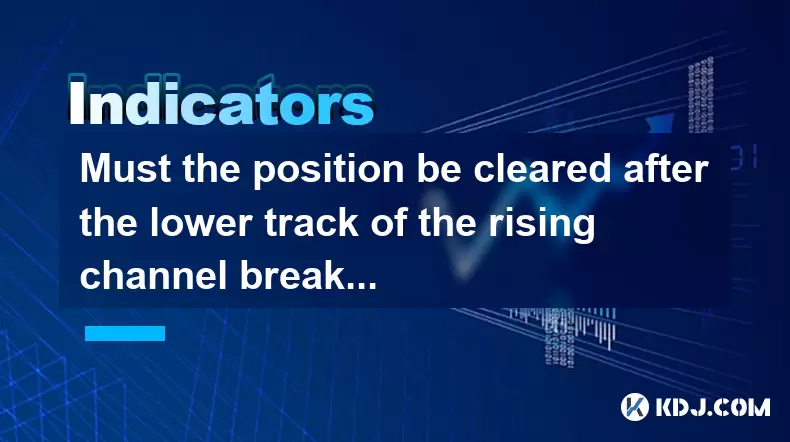
Must the position be cleared after the lower track of the rising channel breaks?
Jun 16,2025 at 04:43pm
Understanding the Rising Channel BreakdownIn technical analysis, a rising channel is formed by drawing two parallel trendlines: one connecting higher lows and another connecting higher highs. When the price breaks below the lower trendline of this channel, it signals a potential reversal or at least a pause in the uptrend. This event often triggers trad...
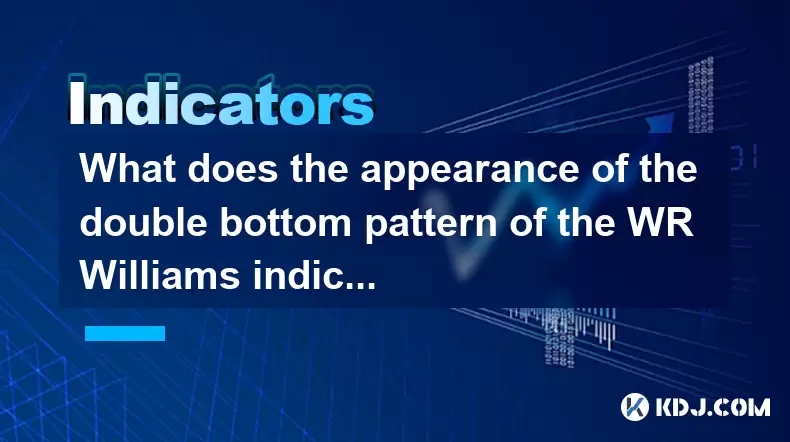
What does the appearance of the double bottom pattern of the WR Williams indicator mean? Can I buy the bottom?
Jun 16,2025 at 01:01pm
Understanding the WR Williams IndicatorThe WR (Williams %R) is a momentum oscillator used in technical analysis to identify overbought and oversold levels in trading. Developed by Larry Williams, this indicator oscillates between 0 and -100. A reading above -20 typically indicates overbought conditions, while a reading below -80 signals oversold territo...
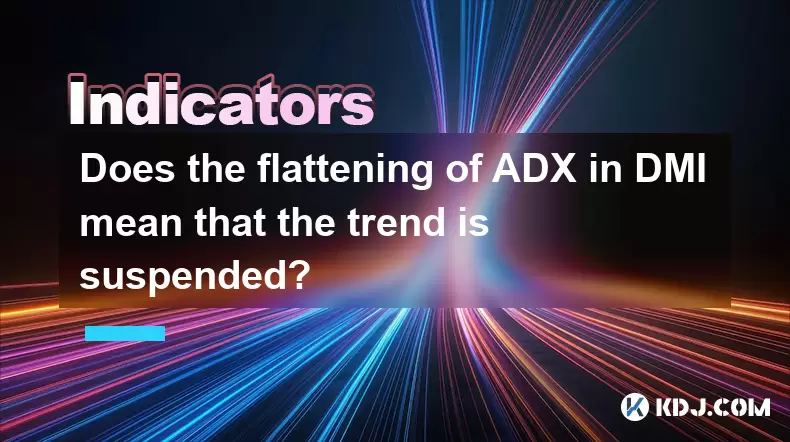
Does the flattening of ADX in DMI mean that the trend is suspended?
Jun 16,2025 at 02:07pm
Understanding the ADX and DMI IndicatorsThe ADX (Average Directional Index) is part of the DMI (Directional Movement Index) system developed by J. Welles Wilder to measure trend strength. The DMI itself consists of three components: the +DI (Positive Directional Indicator), -DI (Negative Directional Indicator), and the ADX line. While the +DI and -DI he...
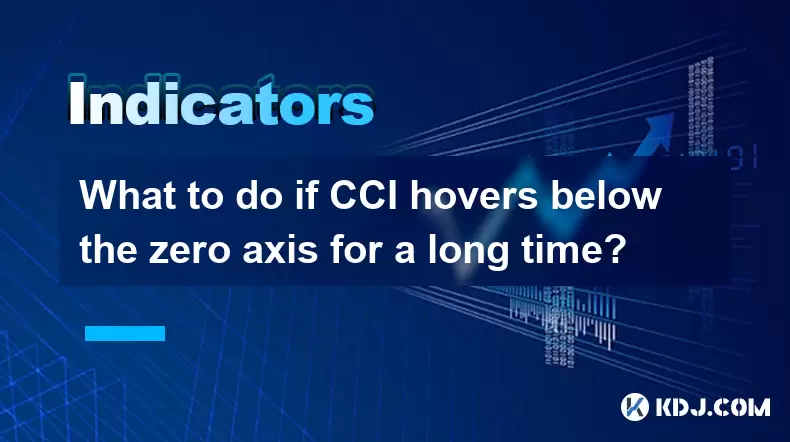
What to do if CCI hovers below the zero axis for a long time?
Jun 16,2025 at 04:05pm
Understanding the CCI Indicator in Cryptocurrency TradingThe Commodity Channel Index (CCI) is a versatile technical indicator used extensively in cryptocurrency trading to identify overbought or oversold conditions, as well as potential trend reversals. When the CCI hovers below the zero axis for an extended period, it can signal a prolonged bearish sen...
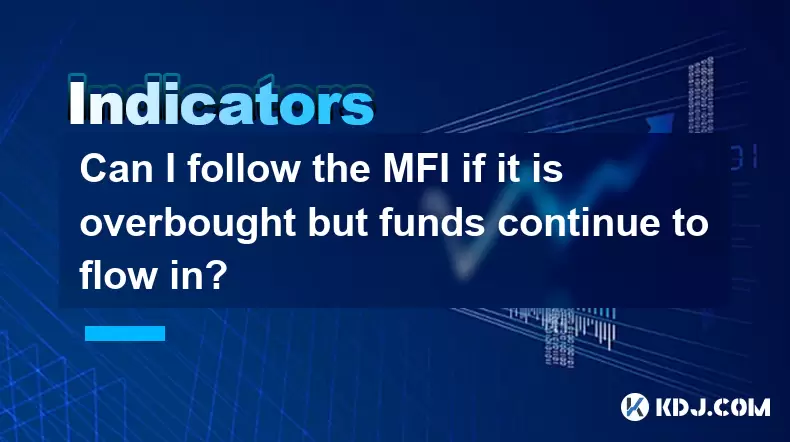
Can I follow the MFI if it is overbought but funds continue to flow in?
Jun 16,2025 at 03:07pm
Understanding the MFI Indicator in Cryptocurrency TradingThe Money Flow Index (MFI) is a technical indicator used extensively in cryptocurrency trading to measure buying and selling pressure. It combines price and volume data to assess overbought or oversold conditions. Typically, an MFI reading above 80 indicates overbought territory, while below 20 su...
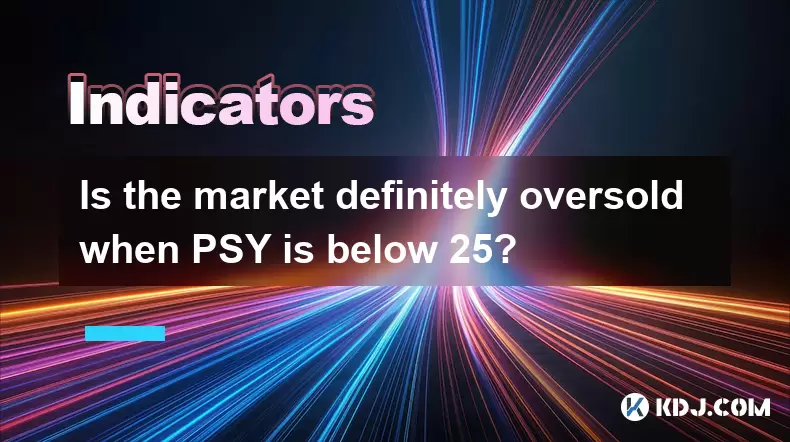
Is the market definitely oversold when PSY is below 25?
Jun 16,2025 at 03:43pm
Understanding the Psychological Line (PSY) IndicatorThe Psychological Line (PSY) is a momentum oscillator used in technical analysis to gauge investor sentiment. It measures the ratio of days when the price closes higher versus the number of days it closes lower over a specific period, typically 12 or 25 trading days. The resulting value ranges from 0 t...

Must the position be cleared after the lower track of the rising channel breaks?
Jun 16,2025 at 04:43pm
Understanding the Rising Channel BreakdownIn technical analysis, a rising channel is formed by drawing two parallel trendlines: one connecting higher lows and another connecting higher highs. When the price breaks below the lower trendline of this channel, it signals a potential reversal or at least a pause in the uptrend. This event often triggers trad...

What does the appearance of the double bottom pattern of the WR Williams indicator mean? Can I buy the bottom?
Jun 16,2025 at 01:01pm
Understanding the WR Williams IndicatorThe WR (Williams %R) is a momentum oscillator used in technical analysis to identify overbought and oversold levels in trading. Developed by Larry Williams, this indicator oscillates between 0 and -100. A reading above -20 typically indicates overbought conditions, while a reading below -80 signals oversold territo...

Does the flattening of ADX in DMI mean that the trend is suspended?
Jun 16,2025 at 02:07pm
Understanding the ADX and DMI IndicatorsThe ADX (Average Directional Index) is part of the DMI (Directional Movement Index) system developed by J. Welles Wilder to measure trend strength. The DMI itself consists of three components: the +DI (Positive Directional Indicator), -DI (Negative Directional Indicator), and the ADX line. While the +DI and -DI he...

What to do if CCI hovers below the zero axis for a long time?
Jun 16,2025 at 04:05pm
Understanding the CCI Indicator in Cryptocurrency TradingThe Commodity Channel Index (CCI) is a versatile technical indicator used extensively in cryptocurrency trading to identify overbought or oversold conditions, as well as potential trend reversals. When the CCI hovers below the zero axis for an extended period, it can signal a prolonged bearish sen...

Can I follow the MFI if it is overbought but funds continue to flow in?
Jun 16,2025 at 03:07pm
Understanding the MFI Indicator in Cryptocurrency TradingThe Money Flow Index (MFI) is a technical indicator used extensively in cryptocurrency trading to measure buying and selling pressure. It combines price and volume data to assess overbought or oversold conditions. Typically, an MFI reading above 80 indicates overbought territory, while below 20 su...

Is the market definitely oversold when PSY is below 25?
Jun 16,2025 at 03:43pm
Understanding the Psychological Line (PSY) IndicatorThe Psychological Line (PSY) is a momentum oscillator used in technical analysis to gauge investor sentiment. It measures the ratio of days when the price closes higher versus the number of days it closes lower over a specific period, typically 12 or 25 trading days. The resulting value ranges from 0 t...
See all articles

























































































